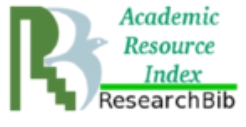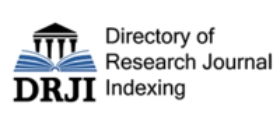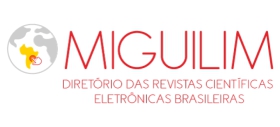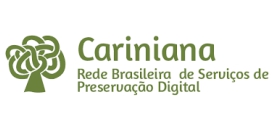Nascentes no Brasil
cenário atual e possíveis lacunas
Visualizações: 1342DOI:
https://doi.org/10.59824/rmrh.v4.263Palavras-chave:
Recursos hídricos, Biodiversidade, Multidisciplinar, Levantamento bibliográfico, CienciometriaResumo
Nascentes são sistemas aquáticos essenciais para a manutenção da vida, além de possuírem alto valor ecológico e econômico. Por ser um objeto de estudo multidisciplinar, as nascentes podem ser analisadas com enfoque em diferentes áreas de estudo. Nesse contexto, a pesquisa objetivou mensurar as publicações sobre nascentes localizadas em território brasileiro e realizar sua análise cienciométrica. Realizando buscas nas bases de pesquisa Scopus (Elsevier), SciELO (Scientific Eletronic Library Online) e Web of Science (Clarivate Analytics) foram encontrados 85 trabalhos, publicados de 1981 a 2022. Os estudos conduzidos na região do Sudeste brasileiro foram os mais abundantes. Os resultados também demonstram que o objetivo da maior parte dos estudos foi analisar a qualidade da água que estava aflorando das nascentes. Embora seja importante mensurar os organismos desse ambiente e agregar esses dados às variáveis abióticas para obter uma avaliação mais abrangente da qualidade da água das nascentes, poucas publicações tinham o intuito de quantificar a biodiversidade existente. É necessário que as diferentes áreas de conhecimento se integrem, a fim de progredir e direcionar maiores esforços com o intuito de preencher lacunas nos estudos sobre nascentes.
Keywords: Water resources. Biodiversity. Multidisciplinary. Bibliographic survey. Scientometrics.
ABSTRACT
Springs are essential aquatic systems to maintain life. Moreover, they have high ecological and economic value. Because they are the object of multidisciplinary studies, springs can be analyzed under the focus of different study areas. In this context, this research considered publications about springs located in Brazilian territory and examined their scientometric analysis. The databases used were Scopus (Elsevier), SciELO (Scientific Electronic Library Online), and Web of Science (Clarivate Analytics). Data shows that 85 papers were published between 1981 and 2022. The studies carried out in the Brazilian Southeast region were the most occurring. The results also demonstrate that most studies analyzed the quality of water emerging from springs. Although it is significant to measure organisms in this environment and add this data to abiotic variables, so that a more accurate assessment of the quality of spring water can be obtained, few publications intended to quantify the existing biodiversity. Therefore, different areas of knowledge must be integrated furthermore, greater effort must be made to gather more complete information about springs.
Downloads
Referências
AGRIZZI, D. V.; CECÍLIO, R. A.; ZANETTI, S. S. et al. Quality of the water from the springs of the Paraíso Settlement. Engenharia Sanitária Ambiental, São Paulo, v. 2, n. 3, 2018. DOI: https://doi.org/10.1590/s1413-41522018150701. Disponível em: https://www.scielo.br/j/esa/a/v8vRGSwYKNGmw7wDy3TZLXM/?format=pdf. Acesso em: 10 ago. 2023.
BAPTISTA, D. F. Uso de macroinvertebrados em procedimentos de biomonitoramento em ecossistemas aquáticos. Oecologia Australis, Rio de Janeiro, v. 12, p. 425-441, 2008. DOI: https://doi.org/10.4257/oeco.2008.1203.05. Disponível em: https://www.arca.fiocruz.br/bitstream/handle/icict/27324/darcilio_baptista_IOC_2008.pdf?sequence=2&isAllowed=y. Acesso em: 10 ago. 2023. DOI: https://doi.org/10.4257/oeco.2008.1203.05
BATISTA, S. G. M.; BARRETO-GARCIA, P. A. B.; SANTOS, L. M. et al. Análise cienciométrica de produções científicas sobre serapilheira no Brasil. Sodebras, Ceará, v. 11, n. 128, p. 102-105, 2016. Disponível em: https://www.researchgate.net/publication/308879433_Analise_cienciometrica_de_producoes_cientificas_sobre_serapilheira_no_Brasil. Acesso em: 10 ago. 2023.
BARROS, F. G. N.; AMIN, M. M. Água: um bem econômico de valor para o Brasil e o mundo. Revista Brasileira de Gestão e Desenvolvimento Regional, Taubaté, v. 4, n. 1, 2008. Disponível em: https://www.researchgate.net/publication/242400395_Agua_um_bem_economico_de_valor_para_o_Brasil_e_o_mundo_1. Acesso em: 10 ago. 2023.
BRASIL. Constituição (1988). Constituição da República Federativa do Brasil. 6. ed. atual. São Paulo: Saraiva, 1992.
BRASIL. Lei 9.433 de 8 de janeiro de 1997. Institui a Política Nacional de Recursos Hídricos, cria o Sistema Nacional de Gerenciamento de Recursos Hídricos, regulamenta o inciso XIX do art. 21 da Constituição Federal, e altera o art. 1º da Lei nº 8.001, de 13 de março de 1990, que modificou a Lei nº 7.990, de 28 de dezembro de 1989. Disponível em: https://www.planalto.gov.br/ccivil_03/LEIS/L9433.htm. Acesso em: 10 ago. 2023.
CANTONATI, M.; ORTLER, K. Using spring biota of pristine mountain areas for long term monitoring - Hydrology, Water Resources and Ecology in Headwaters. IAHS Publications, United Kingdom, v. 248, p. 379-385, 1998. Disponível em: https://www.researchgate.net/publication/236145405_Using_spring_biota_of_pristine_mountain_areas_for_long_term_monitoring. Acesso em: 10 ago. 2023.
CANTONATI, M.; FÜREDER, L.; GERECKE, R. et al. Crenic habitats, hotspots for freshwater biodiversity conservation: toward an understanding of their ecology. Freshwater Science, Chicago, v. 31, n. 2, p. 463-480, 2012. DOI: https://doi.org/10.1899/11-111.1. Disponível em: https://www.researchgate.net/publication/236145405_Using_spring_biota_of_pristine_mountain_areas_for_long_term_monitoring. Acesso em: 10 ago. 2023. DOI: https://doi.org/10.1899/11-111.1
CANTONATI, M.; STEVENS, L. E.; SEGADELIC, S. et al. Ecohydrogeology: the interdisciplinary convergence needed to improve the study and stewardship of springs and other groundwater-dependent habitats, biota, and ecosystems. Ecological Indicators, Amsterdam, v. 110, p. 1-15, 2020a. Disponível em: https://www.researchgate.net/publication/236045768_Crenic_habitats_hotspots_for_freshwater_biodiversity_conservation_Toward_an_understanding_of_their_ecology. Acesso em: 10 ago. 2023. DOI: https://doi.org/10.1016/j.ecolind.2019.105803
CANTONATI, M.; POIKANE, S.; PRINGLE, C. M. et al. Characteristics, main impacts, and stewardship of natural and artificial freshwater environments: consequences for biodiversity conservation. Water, Amsterdam, v. 12, n. 260, 2020b. DOI: https://doi.org/10.3390/w12010260. Disponível em: https://www.researchgate.net/publication/338631056_Characteristics_Main_Impacts_and_Stewardship_of_Natural_and_Artificial_Freshwater_Environments_Consequences_for_Biodiversity_Conservation. Acesso em: 10 ago. 2023. DOI: https://doi.org/10.3390/w12010260
CAPELLARI, A.; CAPELLARI, M. B. A água como bem jurídico, econômico e social: A necessidade de proteção das nascentes. Cidades, comunidades e territórios, Lisboa, v. 36 p. 83-94, 2018. DOI: https://doi.org/10.15847/citiescommunitiesterritories.jun2018.036.art06. Disponível em: https://www.researchgate.net/publication/327839561_A_agua_como_bem_juridico_economico_e_social_a_necessidade_de_protecao_das_nascentes. Acesso em: 10 ago. 2023. DOI: https://doi.org/10.15847/citiescommunitiesterritories.jun2018.036.art06
CEMBRANEL, A. S.; TELES, T. J.; BRAVO, C. E. C. et al. Qualidade ambiental de nascente em área urbana. Revista Tecnologia e Ambiente, Criciúma, v. 25, 2019. Disponível em: https://www.researchgate.net/publication/336911435_QUALIDADE_AMBIENTAL_DE_NASCENTE_EM_AREA_URBANA. Acesso em: 10 ago. 2023. DOI: https://doi.org/10.18616/ta.v25i0.4589
CHIARINI, T.; OLIVEIRA, V. P.; SILVA NETO, F. C. C. Spatial distribution of scientific activities: an exploratory analysis of Brazil, 2000-10. Science and Public Policy, Oxford, p. 1-16, 2013. DOI: https://doi.org/10.1093/scipol/sct093. Disponível em: https://www.researchgate.net/publication/259458767_Spatial_distribution_of_scientific_activities_An_exploratory_analysis_of_Brazil_2000-10. Acesso em: 10 ago. 2023.
DOWNING, J. A. Limnology and oceanography: two estranged twins reuniting by global change. Inland Waters, London, v. 4, 215-232, 2014. DOI: https://doi.org/10.5268/IW-4.2.753. Disponível em: https://www.researchgate.net/publication/271068103_Limnology_and_oceanography_Two_estranged_twins_reuniting_by_global_change. Acesso em: 10 ago. 2023. DOI: https://doi.org/10.5268/IW-4.2.753
FELIPPE, M. F. Caracterização e tipologia de nascentes em unidades de conservação de Belo Horizonte com base em variáveis geomorfológicas, hidrológicas e ambientais. 2009. 277 f. Dissertação (Mestrado em Geografia e Análise Ambiental) – Universidade Federal de Minas Gerais, Belo Horizonte, 2009. Disponível em: https://repositorio.ufmg.br/handle/1843/MPBB-83CPWN. Acesso em: 10 ago. 2023.
FELIPPE, M. F.; MAGALHÃES JUNIOR, A. P. Relação entre Precipitação e Vazão de Nascentes no Município de Lagoa Santa – MG. In: SIMPÓSIO BRASILEIRO DE RECURSOS HÍDRICOS, 20., 2013, Bento Gonçalves – RS. Anais [...]. Bento Gonçalves, ABRH, 2013. 8 p. Disponível em: https://files.abrhidro.org.br/Eventos/Trabalhos/66/SBRH2013__PAP012649.pdf. Acesso em: 10 ago. 2023.
FELIPPE, M. F. Gênese e dinâmica de nascentes: contribuições a partir da investigação hidrogeomorfológica em região tropical. Tese (Doutorado em Geografia) – Universidade Federal de Minas Gerais, Belo Horizonte, 2013. Disponível em: https://repositorio.ufmg.br/handle/1843/IGCC-9GQJDJ. Acesso em: 10 ago. 2023.
FIERRO, P.; VALDOVINOS, C.; VARGAS-CHACOFF, L. et al. Macroinvertebrates and fishes as bioindicators of stream water pollution. In: TUTU, H. (Ed.). Water Quality. 1 ed. Intech, 2017, p. 23-38. DOI: https://doi.org/10.5772/65084. Disponível em: https://www.researchgate.net/publication/312500300_Macroinvertebrates_and_Fishes_as_Bioindicators_of_Stream_Water_Pollution. Acesso em: 10 ago. 2023. DOI: https://doi.org/10.5772/65084
GUEDES, R. D. O Projeto SciELO e os repositórios institucionais de textos científicos. 2012. 155 f. Dissertação (Mestrado em Políticas Públicas, Estratégias e Desenvolvimento) – Universidade Federal do Rio de Janeiro, Rio de Janeiro, 2012. Disponível em: https://www.academia.edu/es/3801007/O_Projeto_SciELO_e_os_Reposit%C3%B3rios_Institucionais_de_Textos_Cient%C3%ADficos. Acesso em: 10 ago. 2023.
LIMA-RIBEIRO, M. S.; NABOUT, J. C.; PINTO, M. P. et al. Análise cienciométrica em ecologia de populações: importância e tendências dos últimos 60 anos. Acta Scientiarum Biological Sciences, Maringá, v. 29, n. 1, p. 39-47, 2007. Disponível em: https://www.researchgate.net/publication/247915272_Analise_cienciometrica_em_ecologia_de_populacoes_importancia_e_tendencias_dos_ultimos_60_anos. Acesso em: 10 ago. 2023. DOI: https://doi.org/10.4025/actascibiolsci.v29i1.125
LOPES, S.; COSTA, M. T.; FERNADEZ-LLIMOS, F. et al. A Bibliometria e a avaliação da produção científica: indicadores e ferramentas. In: CONGRESSO NACIONAL DE BIBLIOTECÁRIOS, ARQUIVISTAS E DOCUMENTALISTAS, 11., 2012. Lisboa. Anais [...]. Lisboa: Associação Portuguesa de Bibliotecários, Arquivistas, Profissionais da Informação e Documentação, 2012. Disponível em: https://repositorio.ul.pt/handle/10451/48791. Acesso em: 10 ago. 2023.
MARTINSON, R.; BERGEY, E.; WARD, J. V. Spring and springbrook fauna of the Piceance basin, Colorado. United States Environmental Protection Agency, 1982. Disponível em: https://www.researchgate.net/publication/235924141_Spring_and_Springbrook_Fauna_of_the_Piceance_Basin_Colorado. Acesso em: 10 ago. 2023.
MARQUES, L. O.; VEIRA, A. T.; FELIPPE, M. F. Monitoramento da dinâmica hidrológica de nascentes em três escalas temporais. In: SIMPÓSIO NACIONAL DE GEOMORFOLOGIA, 11., 2016, Maringá. Anais [...]. Maringá: Universidade Federal de Maringá, 2016. Disponível em: http://sinageo.org.br/2016/trabalhos/3/3-414-511.html. Acesso em: 10 ago. 2023.
ORGANIZAÇÃO DAS NAÇÕES UNIDAS (ONU). Assembleia Geral. Resolução nº 64/292, de 28 de julho de 2010. Disponível em: https://daccess-ods.un.org/tmp/6393292.54627228.html. Acesso em: 03 out. 2023.
OKI, T., KANAE, S. Global hydrological cycles and world water resources. Science, New York, v. 313, p. 1068-1072, 2006. Disponível em: https://www.science.org/doi/10.1126/science.1128845. Acesso em: 10 ago. 2023. DOI: https://doi.org/10.1126/science.1128845
PEREIRA, L. C. Uso e conservação de nascentes em assentamentos rurais. 2012. 187f. Dissertação (Mestrado em Engenharia Civil) – Universidade Federal de Pernambuco, Recife, 2012. Disponível em: https://repositorio.ufpe.br/handle/123456789/10645. Acesso em: 10 ago. 2023.
REID, A. J.; CARLSON, A. K.; CREED, I. F. et al. Emerging threats and persistent conservation challenges for freshwater biodiversity. Biological Reviews, New Jersey, v. 94, p. 849-873, 2019. DOI: https://doi.org/10.1111/brv.12480. Disponível em: https://onlinelibrary.wiley.com/doi/full/10.1111/brv.12480. Acesso em: 10 ago. 2023. DOI: https://doi.org/10.1111/brv.12480
RIBEIRO, L. G. G.; ROLIM, N. D. Planeta água de quem e para quem: uma análise da água doce como direito fundamental e sua valoração mercadológica. Direito Ambiental e Sociedade, Caxias do Sul, v. 7, n. 1, p. 7-33, 2017. Disponível em: http://www.ucs.br/etc/revistas/index.php/direitoambiental/article/view/4149/0. Acesso em: 10 ago. 2023.
RODRIGUES, V. A. Recuperação de nascentes em microbacias da cuesta de Botucatu. In: RODRIGUES, V. A.; BUCCI, L. A. (Org.). Manejo de microbacias hidrográficas: experiências nacionais e internacionais. Botucatu: FEPAF, 2006.
ROYAL SOCIETY. Knowledge, networks and nations: global scientific collaboration in the 21st century. London: The Royal Society, 2011. Disponível em: https://royalsociety.org/policy/projects/knowledge-networks-nations/report/. Acesso em: 09 maio 2021.
SciELO. SciELO Analytics (Beta). Disponível em: https://analytics.scielo.org/. Acesso em: 08 maio 2021.
SIDONE, O. J. G.; HADDAD, E. A.; MENA-CHALCO, J. P. A ciência nas regiões brasileiras: evolução da produção e das redes de colaboração científica. TransInformação, Campinas, v. 28, n. 1, p. 15-31, 2016. DOI: https://doi.org/10.1590/2318-08892016002800002. Disponível em: https://www.scielo.br/j/tinf/a/tvBDyptMBFSxRSt3VngySRC/. Acesso em: 10 ago. 2023. DOI: https://doi.org/10.1590/2318-08892016002800002
SPITALE, D.; BERTUZZI, E.; CANTONATI, M. How to investigate the ecology of spring habitats on the basis of experiences gained from a multidisciplinary project (CRENODAT). In: CANTONATI, M.; BERTUZZI, E.; SPITALE, D. The spring habitat: biota and sampling methods. Trento: Museo Tridentino di Scienze Naturali, 2007, p. 19-30.
TIJSSEN, R. J. W. Cartography of Science: scientometric mapping with multidimensional scaling methods. Leiden, DSWO Press, 1992.
TUCCI, C. E. M.; HESPANHOL, I.; CORDEIRO NETTO, O. M. Gestão da água no Brasil. Brasília: UNESCO, 2001.
TUNDISI, J. G. Apresentação. In: BICUDO, C.; TUNDISI, J. G.; SCHEUENSTUHL, M. Águas do Brasil: análises estratégicas. São Paulo: Instituto de Botânica, 2010.
VAN DER KAMP, G. The hydrogeology of springs in relation to the biodiversity of spring fauna: a review. Journal of the Kansas Entomological Society, Washington, DC v. 68, n. 2, p. 4-17, 1995. Disponível em: https://www.jstor.org/stable/25085630. Acesso em: 10 ago. 2023.
VERBEEK, A.; DEBACKERE, K.; LUWEL, M.; ZIMMERMANN, E. Measuring progress and evolution in science and technology - I: the multiple uses of bibliometric indicators. International Journal of Management Reviews, New Jersey, v. 4, n. 2, p. 179-211, 2002. Disponível em: https://onlinelibrary.wiley.com/doi/10.1111/1468-2370.00083. Acesso em: 10 ago. 2023. DOI: https://doi.org/10.1111/1468-2370.00083
VIEIRA, A.; BARRÊTO, L. C.; ROIPHE, S. Água para vida, água para todos: livro das Águas. Brasília: WWF Brasil, 2006.
WILLIAMS, D. D. The spring as an interface between groundwater and lotie faunas and as a tool in assessing groundwater quality. Verhandlungen des Internationalen Verein Limnologie, Germany, v. 24, 1991. DOI: https://doi.org/10.1080/03680770.1989.11899034
Downloads
Publicado
Como Citar
Edição
Seção
Licença
Copyright (c) 2023 Luiza Pedrosa Guimarães, Luciana Falci Theza Rodrigues, Roberto da Gama Alves

Este trabalho está licenciado sob uma licença Creative Commons Attribution-NonCommercial 4.0 International License.

























